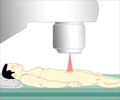Forecasters estimate that the value of prostate cancer market would increase three fold by the year 2023 with the launch of nine new agents.

TOP INSIGHT
Prostate cancer is the second most common cancer in men. Global prostate cancer market would increase three fold by the year 2023 with the launch of nine new agents.
Going by recent research, it is estimated that the global prostate cancer treatment market value will touch $8.2 billion by 2023 at a Compound Annual Growth Rate (CAGR) of 12.3%, which would be a whopping threefold increase in sales from $2.6 billion in 2013.
Reasons for Growth of the Prostate Cancer Market over the Forecast Period
- The main driving force for this would be the introduction of nine new, prostate treatment therapies by 2023, and the launch of products extensions for both Zytiga® and Xtandi® for hormone-sensitive prostate cancer.
- Product line extension of Xtandi® into chemotherapy-naïve metastatic CRPC, non-metastatic CRPC and hormone-sensitive prostate cancer could also be one of the reasons for significant market shares across 9MM.
- Xtandi®, which was launched in 2012, is forecasted to be the market leader with an estimated total sales of $3.8 billion by 2023 mainly due to its use in multiple prostate cancer patient segments. In addition, Xtandi® is postulated to be popular amongst prostate cancer patients due to its favorable safety and efficacy profile and ease of administration.
- Increase in the aging population, which would in turn lead to increase in prostate cancer cases across the 9MM.
- Zytiga®, which was the leading drug in the prostate cancer market in 2013, would lose patent protection by the end of 2016, leading to entry of generic versions of the drug, which would significantly affect its sales.
- Healthcare austerity measures would limit premium pricing opportunities for all the drugs which are in the pipeline for prostate cancer.
- Strict cost control could hinder the reimbursement and uptake of drugs that are priced too high.
References:
1. http://www.researchandmarkets.com/publication/m72ka4q/pharmapoint_prostate_cancer_global_drug_fo
2. http://www.slideshare.net/Ambikabasa/pharma-point-prostate-cancer-global-drug-forecast-and-market-analysis-to-2023
3. http://www.cancer.gov/types/prostate
 MEDINDIA
MEDINDIA




 Email
Email





![Prostate Specific Antigen [PSA] Prostate Specific Antigen [PSA]](https://www.medindia.net/images/common/patientinfo/120_100/prostate-specific-antigen.jpg)




